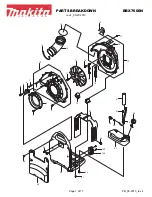
TERMINA TRANSPARENT DRIVE
2
TABLE OF CONTENTS
1
Project Overview
7
Drill Template
2
Introduction & Usage
8
Enclosure Layout
3-4
Parts List
9
Wiring Diagram
5
Build Notes
10
Licensing
6
Schematic
10
Document Revisions
INTRODUCTION
The Termina Transparent Drive is based on the Timmy overdrive pedal from Paul Cochrane, with some
modifications adapted from the Vemuram Jan Ray.
The Timmy was originally released in 2004 and is generally credited for kicking off the “transparent
overdrive” genre of pedals. It does have a two-band tone control, but generally speaking it’s not
designed to have much character of its own, instead bringing out the best qualities of the guitar and
amplifier. While it has some similarities to a stripped-down Tube Screamer, there is no trace of the
720Hz mid-hump the Tube Screamer is known for.
The Termina is more specifically based on the Timmy V2 with the clipping diode switch, which is the
same version that was licensed to MXR for their Custom Shop mini version. The Timmy V3 “15th
Anniversary” edition was released in 2019, moving the diode selector inside the pedal and repurposing
the toggle switch as a gain boost.
The Timmy has undergone several circuit changes throughout its run, so there is no single definitive
schematic. This
from ManticoreFX tracks all the known differences, with
several collected posts from Paul explaining the changes. The Termina project incorporates all of the
revisions prior to the V3 overhaul, while reversing the travel of the bass and treble knobs so they
increase the frequencies as they’re turned up instead of cutting as on the V2.
Please see page 10 for revised licensing terms, which are different from our normal projects. The
original Timmy pedal remains one of the best deals in the industry and we want to encourage as many
people as possible to buy the original if they are able.
USAGE
The Termina has four controls and one toggle switch:
•
Drive
controls the amount of gain from the op-amp stage that is clipped by the diodes.
•
Bass
allows adjustment of the pre-clipping bass response of the circuit.
•
Treble
allows adjustment of the post-clipping treble response of the circuit.
•
Level
sets the overall output of the effect.
•
Clipping
selects between three different sets of clipping diodes.




























